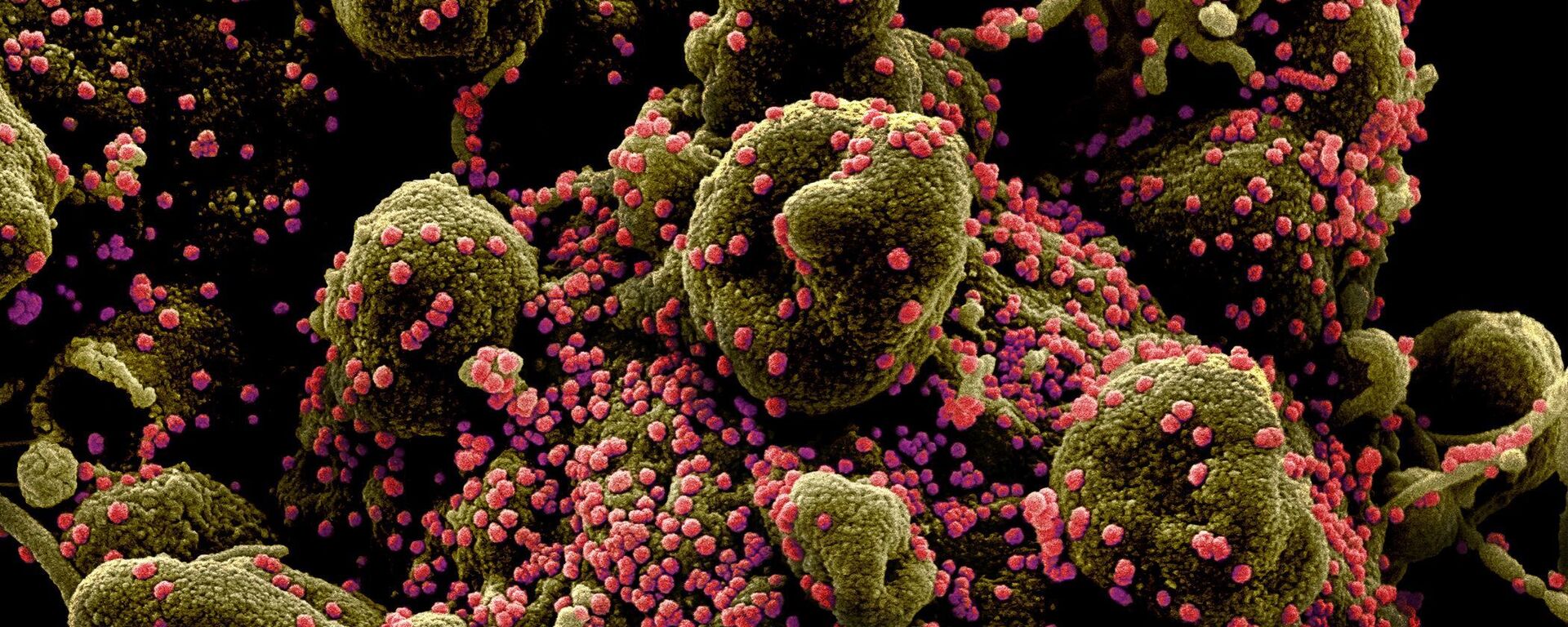https://sputnikglobe.com/20230418/what-is-arcturus-covid-19-variant-detected-in-22-countries-so-far-1109632843.html
What is 'Arcturus' COVID-19 Variant Detected in 22 Countries So Far?
What is 'Arcturus' COVID-19 Variant Detected in 22 Countries So Far?
Sputnik International
Although it has emerged as a distinct subvariant of Omicron, Arcturus doesn’t seem to be too different from its parent virus.
2023-04-18T17:20+0000
2023-04-18T17:20+0000
2023-04-18T17:20+0000
sputnik explains
covid-19
variant
world health organization (who)
https://cdn1.img.sputnikglobe.com/img/07e4/0a/0b/1080742023_0:320:3073:2048_1920x0_80_0_0_2b67a127c82f5bb8e7e14738d53cefc0.jpg
The World Health Organization (WHO) has designated the new coronavirus subvariant XBB.1.16 as a “variant under monitoring, but so far isn’t sounding the alarms. Because of its mouthful of a name, the subvariant is better known as “Arcturus,” following a semi-official subvariant naming scheme derived from mythological characters that the WHO has not yet adopted.Outside of COVID-19 virology, Arcturus is a red giant star found in the constellation Bootes, and the fourth-brightest star in the night sky as seen from Earth. Its name in Ancient Greek means “Guardian of the Bear.” The subvariant was first detected in January.More Infectious, No More DeadlyAlthough it has emerged as a distinct subvariant of Omicron, a WHO-named COVID-19 variant that was first detected in late 2021 and has been the dominant variant globally for nearly 16 months, Arcturus doesn’t seem to be too different from its parent virus.“We haven’t seen a change in severity in individuals or in populations, but that’s why we have these systems in place. It has one additional mutation in the spike protein, which, in lab studies, shows increased infectivity as well as potential increased pathogenicity,” she added.In other words, it’s a bit more infectious than Omicron, but not by much, and the symptoms don’t seem to be any worse than Omicron. Work by Japanese doctors suggests it might be 1.2 times more infectious than Omicron. There hasn’t been a detected increase in deaths related to Arcturus, either.New SymptomsIn addition to the classic flu-like symptoms of COVID-19, such as coughing, fever, chills, and loss of sense of taste, doctors have identified some new symptoms unique to the Arcturus subvariant.Where Has Arcturus Been Found?Arcturus is blamed for a large outbreak currently underway in India, where officials have tracked at least 50,000 new cases per day in recent weeks. However, the subvariant has been detected in 22 countries, with small numbers of cases found in the United Kingdom and United States recently.The variant tracker at the US Centers for Disease Control and Prevention (CDC) shows small numbers of cases being detected in over a dozen US states, but none increasing very rapidly. In the UK, just 50 cases have been spotted so far.“There’s no evidence that this is any more severe - and probably it’s somewhat less severe than previous strains - but it’s too early to be certain. And that’s almost certainly because of immunity,” Hunter explained. “It will probably become the dominant variant for a while in the U.S. and Europe and most countries around the world, but I don’t see it driving up severe infections more than we’ve seen in recent waves.”He added that there is evidence that past COVID-19 infection, as well as multivalent SARS-CoV-2 vaccination, are both having an effect on immunity, although the variant could still circulate for years to come.
https://sputnikglobe.com/20230411/biden-signs-bill-ending-us-covid-19-national-emergency---white-house-1109336084.html
https://sputnikglobe.com/20230323/unprecedented-greed-sanders-slams-moderna-after-company-confirms-130-price-for-covid-jab-1108735429.html
Sputnik International
feedback@sputniknews.com
+74956456601
MIA „Rossiya Segodnya“
2023
News
en_EN
Sputnik International
feedback@sputniknews.com
+74956456601
MIA „Rossiya Segodnya“
Sputnik International
feedback@sputniknews.com
+74956456601
MIA „Rossiya Segodnya“
arcturus covid variant, covid-19 mutant, what is arcturus
arcturus covid variant, covid-19 mutant, what is arcturus
What is 'Arcturus' COVID-19 Variant Detected in 22 Countries So Far?
The Covid subvariant, one of hundreds to spawn from the Omicron variant of the SARS-COV-2 virus, doesn’t seem to be more lethal than the others, but health officials are watching as it slowly spreads around the world. More infectious virus variants tend to displace less infectious competitors and become the dominant cause of infection.
The World Health Organization (WHO) has designated the new coronavirus subvariant XBB.1.16 as a “variant under monitoring, but so far isn’t sounding the alarms. Because of its mouthful of a name, the subvariant is better known as “Arcturus,” following a semi-official subvariant naming scheme derived from
mythological characters that the WHO has not yet adopted.
Outside of COVID-19 virology, Arcturus is a red giant star found in the constellation Bootes, and the fourth-brightest star in the night sky as seen from Earth. Its name in Ancient Greek means “Guardian of the Bear.” The subvariant was first detected in January.
More Infectious, No More Deadly
Although it has emerged as a distinct subvariant of Omicron, a WHO-named COVID-19 variant that was first detected in late 2021 and has been the dominant variant globally for nearly 16 months, Arcturus doesn’t seem to be too different from its parent virus.
“It’s been in circulation for a few months,” Maria Van Kerkhove, the WHO’s technical lead for Covid, said at a March 29 press conference.
“We haven’t seen a change in severity in individuals or in populations, but that’s why we have these systems in place. It has one additional mutation in the spike protein, which, in lab studies, shows increased infectivity as well as potential increased pathogenicity,” she added.
In other words, it’s a bit more infectious than Omicron, but not by much, and the symptoms don’t seem to be any worse than Omicron. Work by Japanese doctors suggests it might be 1.2 times more infectious than Omicron. There hasn’t been a detected increase in deaths related to Arcturus, either.
In addition to the classic flu-like symptoms of COVID-19, such as coughing, fever, chills, and loss of sense of taste, doctors have identified some new symptoms unique to the Arcturus subvariant.
According to Vipin Vashishtha, a pediatrician and former head of the Indian Academy of Pediatrics Committee on Immunization, the large outbreak in India has shown doctors that Arcturus commonly brings with it “itchy” conjunctivitis or pinkeye not seen in other COVID-19 cases.
Where Has Arcturus Been Found?
Arcturus is blamed for a large outbreak currently underway in India, where officials have tracked at least 50,000 new cases per day in recent weeks. However, the subvariant has been detected in 22 countries, with small numbers of cases found in the United Kingdom and United States recently.
The
variant tracker at the US Centers for Disease Control and Prevention (CDC) shows small numbers of cases being detected in over a dozen US states, but none increasing very rapidly. In the UK, just 50 cases have been spotted so far.
“We’ve seen this in the past,” Paul Hunter, a professor of medicine at the University of East Anglia, told US media. “You look at the virus and it’s got mutations that should make it more virulent, but then in reality you don’t see that.”
“There’s no evidence that this is any more severe - and probably it’s somewhat less severe than previous strains - but it’s too early to be certain. And that’s almost certainly because of immunity,” Hunter explained. “It will probably become the dominant variant for a while in the U.S. and Europe and most countries around the world, but I don’t see it driving up severe infections more than we’ve seen in recent waves.”
He added that there is evidence that past COVID-19 infection, as well as multivalent SARS-CoV-2 vaccination, are both having an effect on immunity, although the variant could still circulate for years to come.



